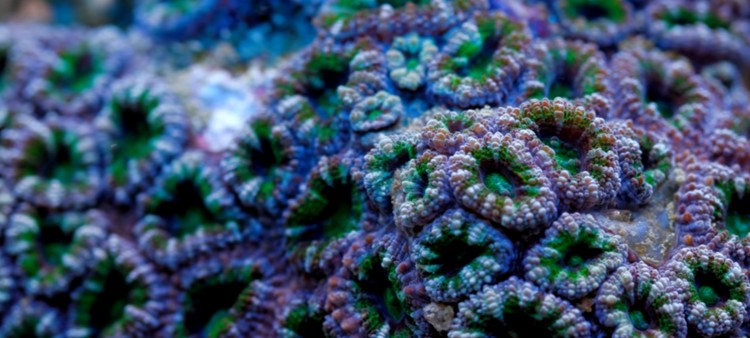Micromussa Stony Coral: Complete Care Guide
- Aug 12, 2021
- Anshika Mishra
- 2264 0 0

If you look at this coral and think to yourself, isn't this an Acanthastrea, you would not be alone. Until recently, this was an Acanthastrea Lordhowensis, sharing a genus with Acanthastrea Echinata. It had since been reclassified as a Micromussa in 2016. Name change aside, these are still some of the most popular are stony polyp corals.
In this article, we will be sharing some care tips as far as placement, lighting, feeding, and much more, as described by the Tidal Gardens.
Micromussa
Micromussa is one of the most popular large polyp stony corals ever since some amazing specimens started showing up from Australia about a decade ago. Initially, a baseball-sized colony in a primary color like red or green would fetch over $1000 online. The coral collector market instantly gravitated to these corals.
Over the years, though, the price has come down substantially, and they are now a much greater variety of colors. Most of them were either red or green, but now there are rainbow variants available everywhere.
Two species of Micromussa are commonly seen in the hobby:
- Micromussa Lordhowensis, formerly an Acan
- Micromussa Amakusensis
Micromussa Amakusensis is typically a more diminutive polyp than Lordhowensis, and they also have slightly different patterns. Often you get UFO rights on Amakusensis that are not common on Lords. It makes sense that two corals will eventually group in the Micromussa genus because they appear to have a lot more in common with one another than to Acanthastrea Echinata or a Bowerbanki that have a flatter appearance.
Micromussa Care Tips
Now that we have covered some of the background info on Micromussa and a whirlwind tour of coral renaming, rest assured that none of it really translates to a change in farming for these corals. So, let go over some care requirements in detail now:
Lighting
Micromussa does not require very much light. People struggle a bit with these corals because they are providing too much light. We recommend low to medium light, something in the range of 25-50 PAR. They seem to be happiest in the dimmest light settings.
The other thing to mention lightning-wise with Micromussa is that they will change the color dramatically depending upon the spectrum of lightning provided. Therefore, it may require significant trial and error with different light spectrums to achieve the particular color you are looking for.
Flow and Placement
Micromussa does not require a ton of flow. So, always look to provide just enough so that residue does not settle on them. Most of the time, hobbyists place them towards the bottom of the tank to ensure that they get enough flow clean.
Feeding
On the other hand, feeding these corals is essential. However, in long-term health, preferably, the flow can be slowed down during the feeding time to help the coral grab pieces out of the water column.
You can feed them a mix of frozen shrimps. It is advised to keep the blend basic, mainly shrimp and krill, with a few rotifers. You can also feed a high-quality dry coral pellet food, but be careful not to overfeed dry food of any kind because it is possible to burn the coral if too much is fed at once. So, if you do decide to go down that route, less is more.
Choosing the Right Micromussa
When choosing a Micromussa, choose the one with very fat and inflated polyps with tentacles constantly extended. They grow much faster and add additional buds when they look like this. When Micromussa comes from the wild, they almost always look small and tightly drawn in.
Water Chemistry
It is essential to know that Micromussa is a potentially fast-growing LPS. As with any stony coral, Micros uses calcium, carbonate, and magnesium to build up their skeletons. However, faster-growing means that they can tax these water parameters more than a similar-looking but slower-growing LPS such as Favia.
If you decide to ramp up feeding, it is good to test for Phosphates and Nitrates, which are basic pollution matrics. Micromussa can tolerate slightly elevated Nitrates. They might even like it, but once they have reached a level approaching 30-50 parts per million. Then, things can go downhill really fast and cause tissue recession.
Similarly, corals do need a little bit of Phosphate in the water, but elevated levels can cause an algae bloom, which can negatively affect all of your corals.
Is Micromussa Good Option for Your Reef Tank?
So, what kind of tank is Micromussa for?
Typically, we would say a mix of reed, but these corals would do a lot better than dimly light, making it less suitable for light-loving corals like Acropora and Montiporas. This coal would fare best in an LPS dominated tank with similar low light corals like Blastomussa and possibly no photosynthetic corals that appreciate regular feeding and slightly elevated nutrient levels.






About author